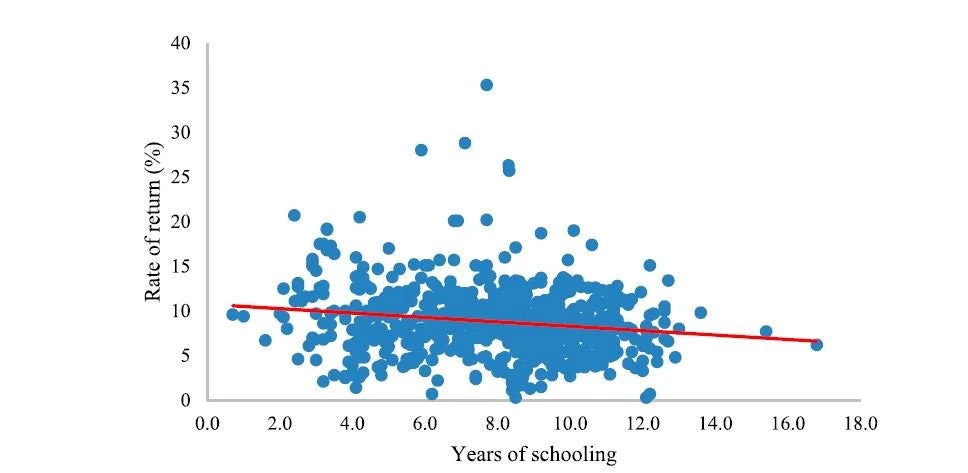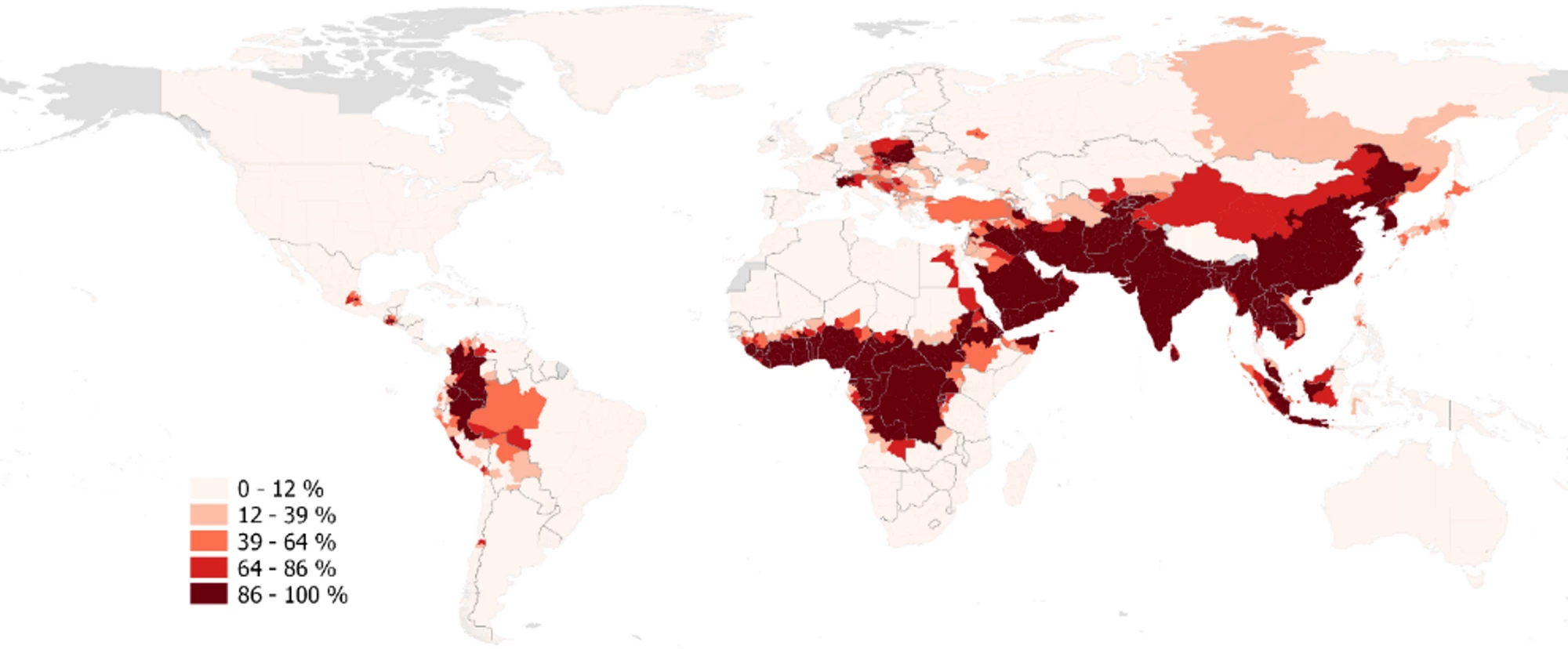 Traffic and pollution, Cairo, Egypt. Photo: Kim Eun Yeul / World Bank
Traffic and pollution, Cairo, Egypt. Photo: Kim Eun Yeul / World Bank
Globally, poor air quality is estimated to cause some 7 million deaths each year, as it increases the risk of a wide range of cardiovascular and respiratory diseases. Yet the exposure to and impact of air pollution are not equally distributed. Air pollution is particularly prevalent in industrializing developing economies. Less stringent air quality regulations, the prevalence of older polluting machinery and vehicles, subsidized fossil fuels, congested urban transport systems, rapidly developing industrial sectors, and cut-and-burn practices in agriculture are all contributing to heightened pollution levels. The lack of affordable quality healthcare services further increases air pollution related mortality.
And within countries, poorer and marginalized communities are often more exposed. Low-paying jobs are more likely to require physical outdoor labor, leading to heightened exposure. Pollution sources, such as industrial plants or transport corridors, are disproportionately located in low-income neighborhoods. And as air pollution increases, housing prices go down, which in turn reinforces the low-income status of neighborhoods. In short, as health, well-being, and productivity suffer, air pollution can reinforce socio-economic inequalities .
Figure 1. Average annual PM2.5 concentrations in Southeast Asia
Source: Rentschler & Leonova (2022) based on
Poor people’s exposure to harmful air pollution.
While many studies have focused on air pollution in rich countries, a better understanding of the interplay between air pollution and poverty is crucial for several reasons. Studies from high-income countries on the health risks associated with air pollution may not be directly transferable to low-income communities, where the nature of occupations and healthcare differ substantially . The health and productivity implications of air pollution will impact the socio-economic prospects of developing countries. This is especially significant in low-income countries, which tend to still have relatively low anthropogenic air pollution levels compared to more industrialized middle-income countries. Here, there is still an opportunity to ensure that development progress does not come hand in hand with intensifying air pollution and the associated detrimental effects on health and well-being .
2.8 billion people face hazardous air pollution levels
In a new study, we provide a comprehensive account of the relationship between ambient (outdoor) air pollution exposure, economic development, and poverty in 211 countries and territories. It presents global exposure estimates for the World Health Organization’s 2021 revised fine particulate matter (PM2.5) thresholds. In addition, we provide estimates of the number of poor people exposed to unsafe PM2.5 concentrations. The findings are based on high-resolution air pollution and population maps with global coverage, as well as subnational poverty estimates based on harmonized household surveys.
Our estimates show that globally 7.3 billion people, or 94 percent of the world population, face air pollution levels considered unsafe by the WHO (annual average PM2.5 concentration over 5 μg/m3). For 2.8 billion people pollution levels are hazardous – with PM2.5 concentrations over 35 μg/m3, which implies a mortality rate that is more than 24 percent higher than in safe areas.
Figure 2. Share of population exposed to PM2.5 concentrations over 15 μg/m3
One in ten people exposed to unsafe air pollution live in extreme poverty
We estimate that 716 million people living in extreme poverty, calculated as living on less than $1.90 per day, are directly exposed to unsafe PM2.5 concentrations; of these, 405 million, or 57 percent are in Sub-Saharan Africa. Further, 275 million people living in extreme poverty are exposed to hazardous PM2.5 concentrations (over 35 μg/m3). Approximately one in ten people exposed to unsafe levels of air pollution live in extreme poverty –making them particularly vulnerable to prolonged adverse impacts on their livelihoods and well-being. For the extreme poor, the same air pollution level likely means increased severe health risks compared to higher income households, as the effects of air pollution are compounded by other poverty risk factors in addition to inequitable access to affordable healthcare.
Pollution is highest in middle-income countries
Yet, the estimates also show that the vast majority of people breathing unsafe air are located in middle-income countries, where 5.5 billion people are exposed to hazardous PM2.5 levels (over 35 μg/m3) – compared to just 40.5 million in low- and high-income countries combined. As a share of the overall population, PM2.5 exposure is also by far the highest in middle-income countries. About 64.5 percent of people in lower-middle-income countries are exposed to PM2.5 levels over 35 μg/m3, compared to just 4.4 percent in low-income countries and 0.9 percent in high-income countries .
Towards healthier lives and better livelihoods
Our study affirms the case for targeted measures that reduce the pollution intensity of economic growth – for instance, supporting the uptake of clean technologies and fuels. In addition, measures are needed to directly address the disproportionate exposure of poor people to pollution. For example, improving the provision of affordable and adequate healthcare in large urban centers can help reduce mortality. Mandating transparent accounting for environmental and health externalities in planning decisions can help to steer pollution sources, like industrial zones, away from low-income communities. Finally, removing incentives that perpetuate the over-consumption of polluting fuels can yield a double dividend for poor people. For instance, fossil fuel subsidies are well documented to benefit richer households disproportionately, but the air pollution externalities associated with subsidized fossil fuel consumption are also a burden that can be borne disproportionately by poorer households.






Join the Conversation